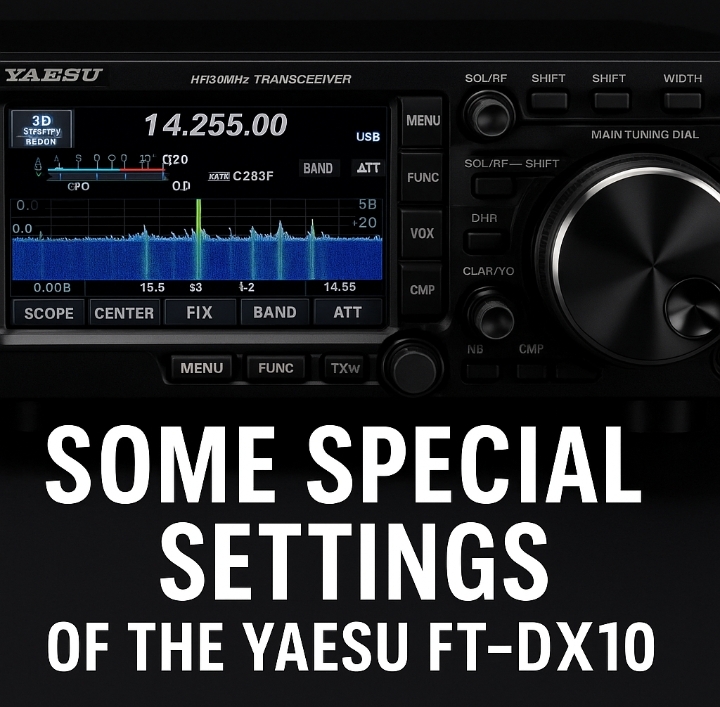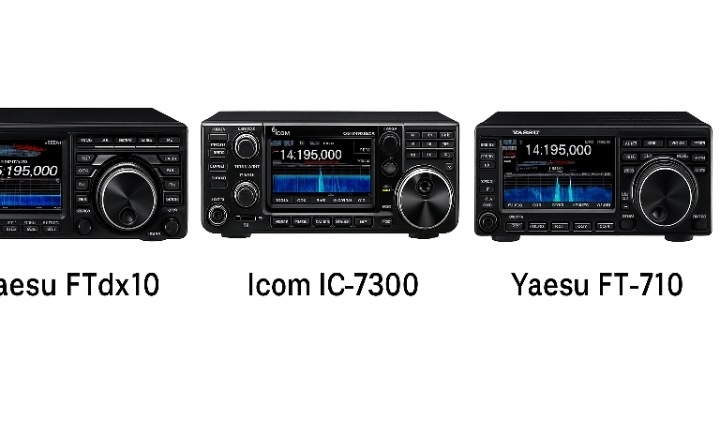As a ham radio operator, few things are as frustrating as trying to enjoy a QSO only to be disrupted by crackling static, buzzing, or unexpected signal distortion. Radio Frequency Interference (RFI) is a common issue that can severely impact your ability to send and receive clear signals. Whether you’re a newcomer or a seasoned operator, understanding how to identify and fix RF interference is crucial to maintaining a high-quality station.
In this blog post, we’ll break down the basics of RF interference, how to detect its sources, and most importantly, how to eliminate or mitigate its effects.
What Is RF Interference?
RF interference refers to any unwanted radio frequency signal that disrupts the normal operation of your ham radio. These signals can come from both natural and man-made sources and can affect both the reception and transmission of your equipment.
There are two main categories of interference:
- Conducted Interference: Travels along wires and cables.
- Radiated Interference: Broadcasts through the air, affecting nearby devices.
The key to fixing interference is first understanding where it comes from.
Common Sources of RF Interference
- Household Electronics
- LED lights
- Switching power supplies (phone chargers, laptop adapters)
- Wi-Fi routers and modems
- Televisions
- Microwave ovens
- Power Lines
- Arcing insulators or bad connections on power poles can cause persistent buzzing.
- Computers and Networking Equipment
- Ethernet cables and poorly shielded routers can be surprisingly noisy on the HF bands.
- Nearby Solar Power Systems
- Inverters used in solar panel systems are known sources of broadband RFI.
- Other Ham Stations
- Intermodulation or spurious emissions from nearby amateur radio setups.
How to Identify RF Interference
Identifying the source of interference is a methodical process. Here are some techniques you can use:
1. Use Your Ears and Eyes
- Tune across the affected band and note the pattern or sound of the noise. Different types of interference produce distinct audio signatures.
- Buzzing often indicates power supply noise.
- Crackling suggests arcing or static discharge.
- Rhythmic pulses may point to digital equipment or routers.
2. Use an AM Radio or Handheld Receiver
- Portable AM radios are excellent tools for sniffing out interference.
- Tune to a quiet frequency and walk around your shack and home. The noise will get louder as you approach the source.
3. Turn Off Circuit Breakers
- One at a time, turn off each breaker in your house while monitoring the interference. This can help you isolate the circuit that powers the offending device.
4. Use Ferrite Beads and Directional Antennas
- Ferrite beads on cables can help identify which cable is carrying noise.
- Directional antennas or small loops can help triangulate the interference.
5. Consult with Neighbors
- If the interference originates outside your property (e.g., solar systems or power lines), a polite conversation with neighbors or a call to the utility company may be necessary.
How to Fix RF Interference
Once you’ve identified the source, here are several strategies to eliminate or reduce the impact of RFI:
1. Ferrite Chokes and Beads
- Install ferrite chokes on power cords, USB cables, Ethernet lines, and antenna feedlines.
- Use mix #31 or #43 ferrite materials, which are effective across a broad range of frequencies.
2. Shielding and Grounding
- Shield cables and enclosures with aluminum foil, braid, or commercially available shields.
- Ensure all equipment is properly grounded to prevent RFI from entering through power or RF lines.
3. Replace or Repair Noisy Devices
- Replace problematic LED bulbs or power adapters with RF-quiet alternatives.
- Choose equipment certified for low EMI (electromagnetic interference).
4. Improve Station Layout
- Separate your ham equipment from household electronics and networking devices.
- Route cables away from each other to reduce coupling.
5. Use RF Filters
- Install band-pass or low-pass filters on transmitters and receivers.
- Use common-mode chokes on antenna feedlines to block unwanted RF.
6. Upgrade Antenna Setup
- Move antennas farther away from your home or noise sources.
- Try using a balanced antenna system like a dipole with a good balun.
Case Study: Solving Interference from a Laptop Power Supply
One of the most common sources of RFI is the switching power supply used with laptops. Here’s how you might troubleshoot and fix it:
- Symptom: Buzzing noise from 14 MHz to 30 MHz on HF bands.
- Detection: Using a portable AM radio, you find the noise is loudest near the desk where your laptop is charging.
- Solution:
- Replace the charger with a linear power supply (if possible).
- Add ferrite chokes to both ends of the power cable.
- Re-route the cable away from your radio and feedlines.
- Result: The noise is significantly reduced, restoring clear signal reception.
When to Seek Help
Sometimes, despite your best efforts, interference persists. In such cases, consider:
- Asking your local ham club – Many experienced operators have dealt with similar issues.
- Contacting the ARRL (American Radio Relay League) – They offer resources and technical help for RFI cases.
- Involving your utility company – Especially if the interference originates from power lines or external infrastructure.
Document everything: take recordings, log dates and times, and keep detailed notes. This helps tremendously if you need to escalate the issue.
Conclusion
RF interference can be a persistent annoyance, but with the right tools and a systematic approach, it can almost always be resolved. Start by identifying the source, then apply appropriate mitigation techniques. Whether it’s as simple as adding a ferrite choke or as involved as rewiring part of your shack, each step brings you closer to a quiet, reliable signal.
By staying informed and proactive, you can keep your ham station performing at its best and continue enjoying clear, uninterrupted QSOs.
Did this guide help you track down interference in your shack? Share your experience in the comments below!



